
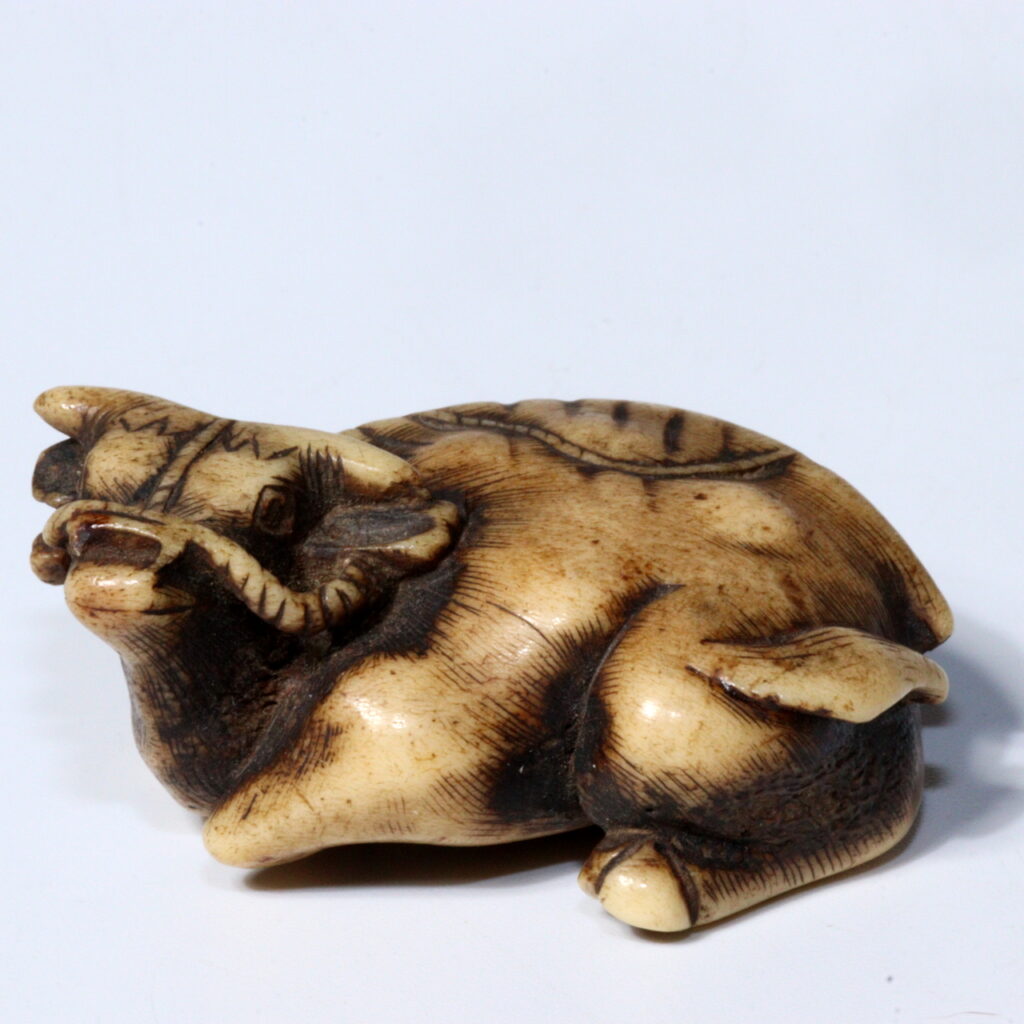
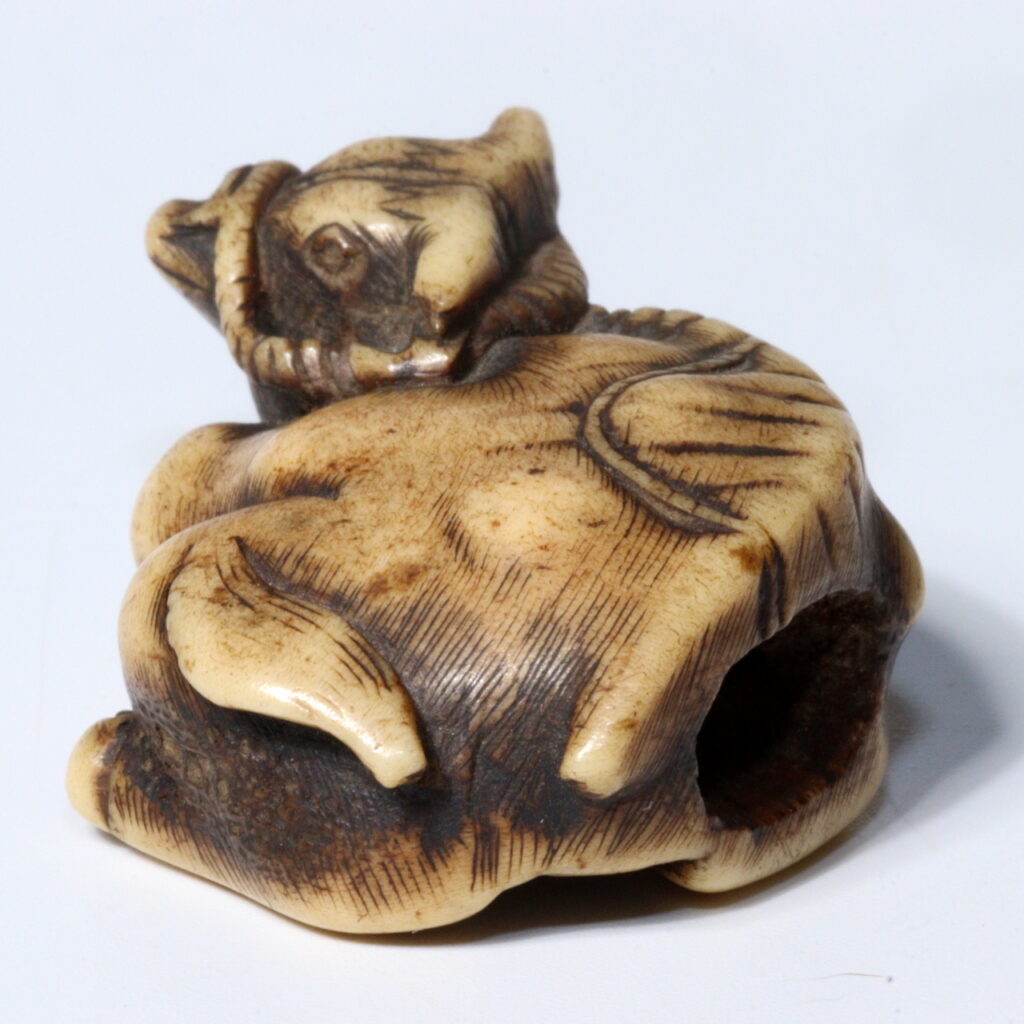
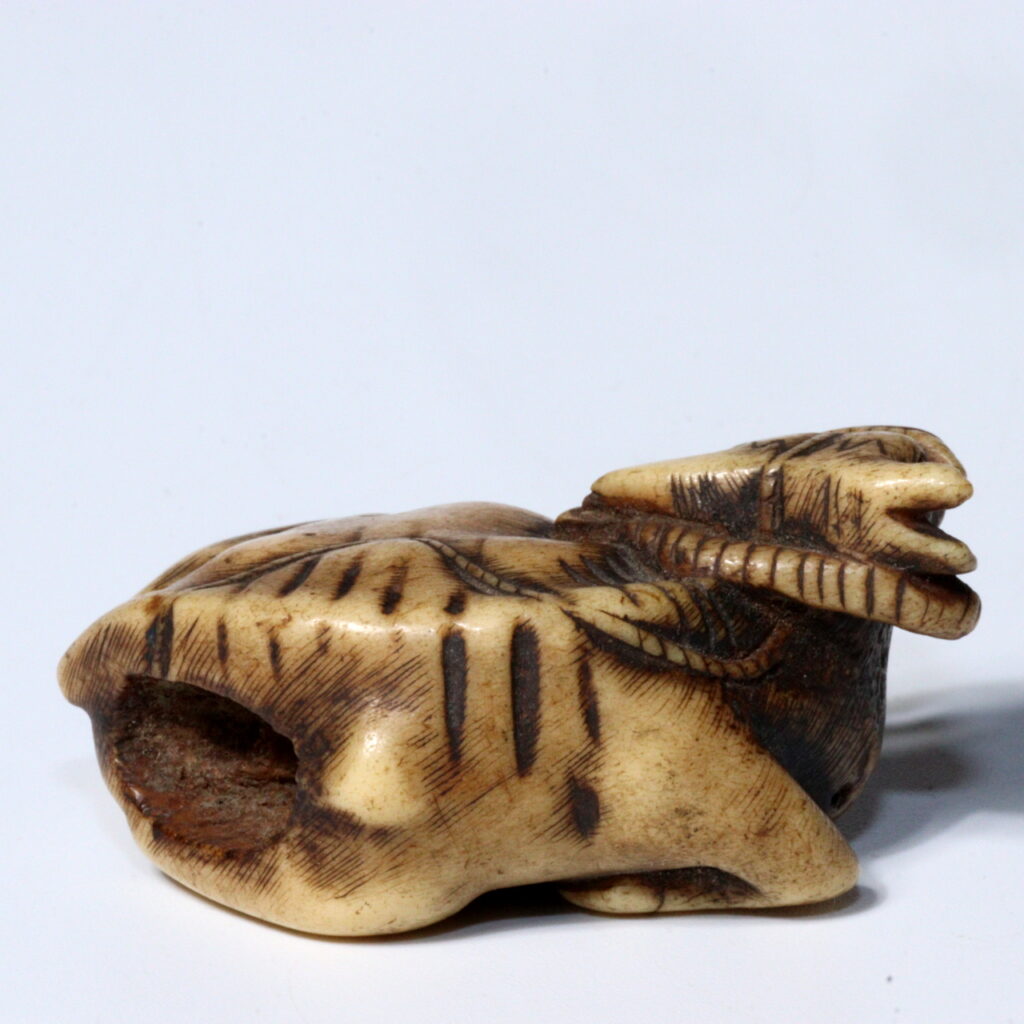
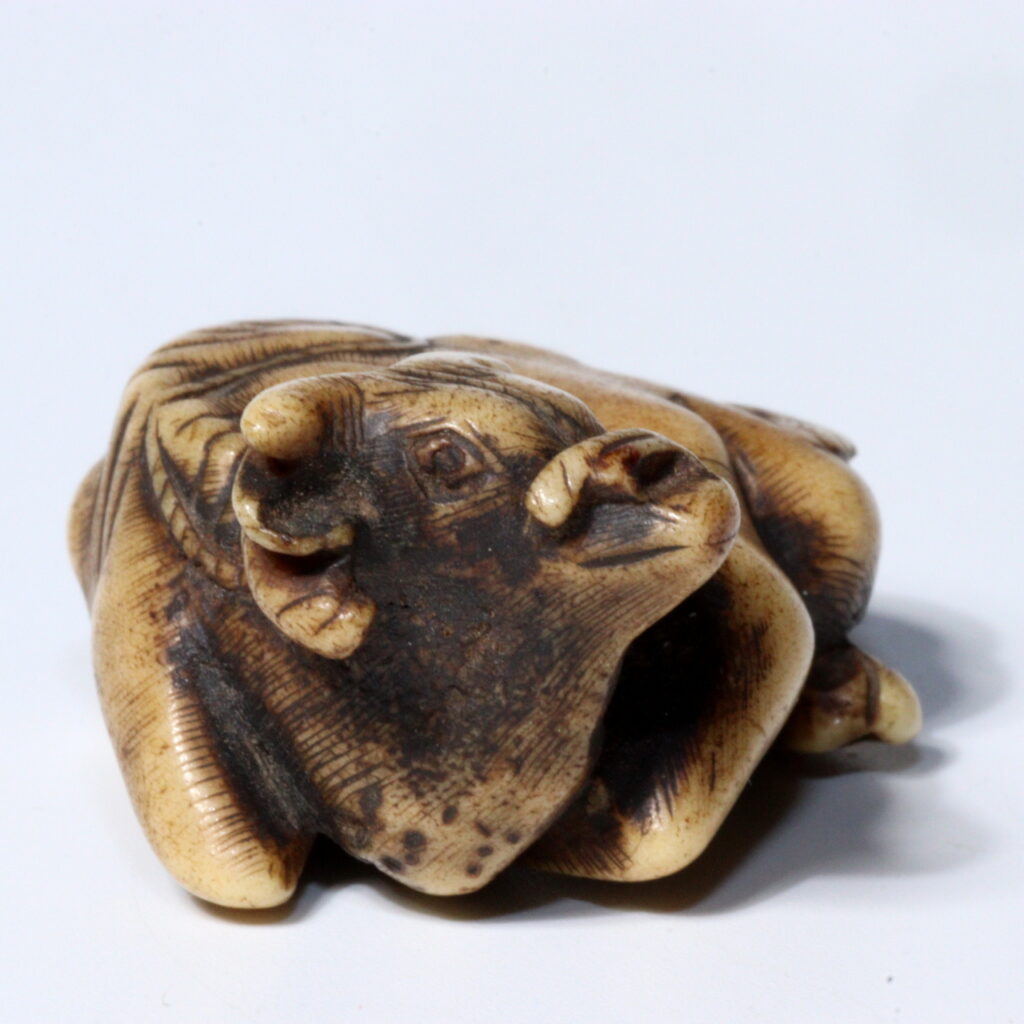
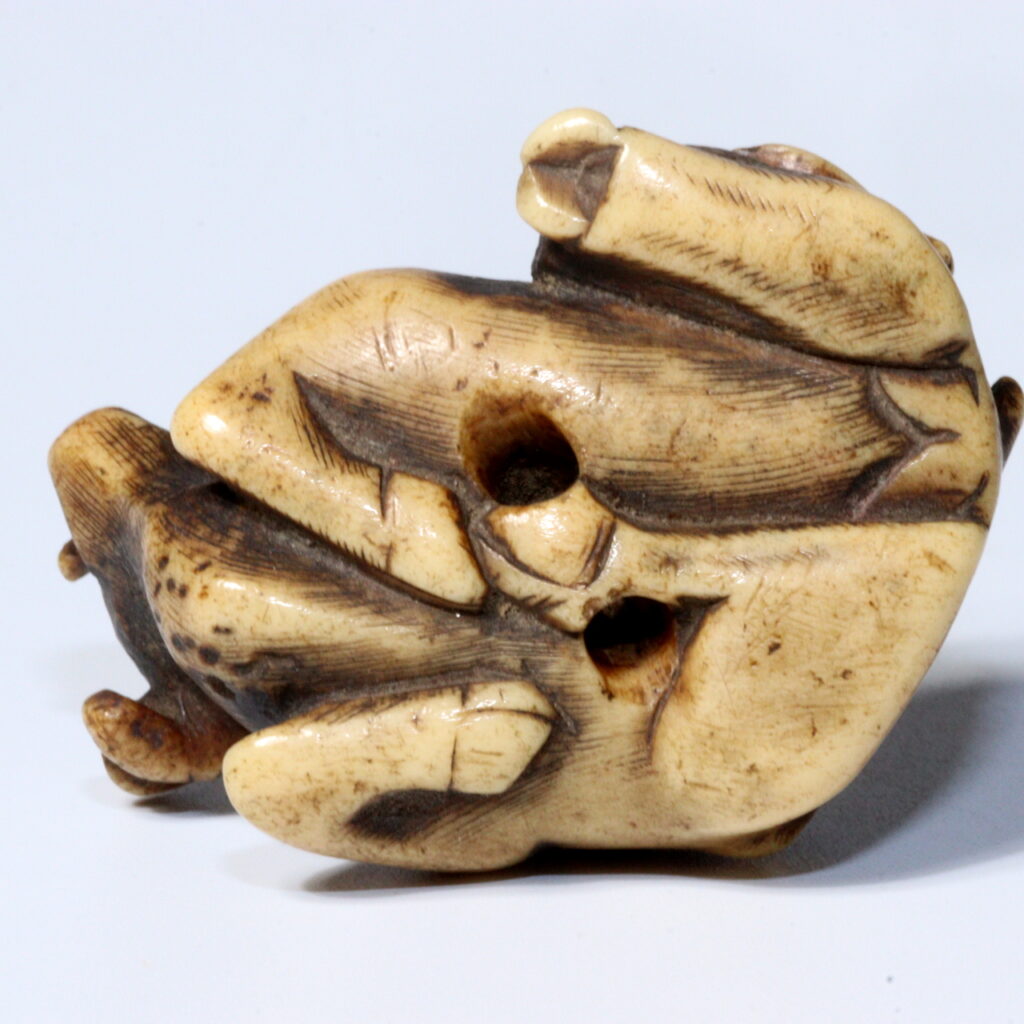
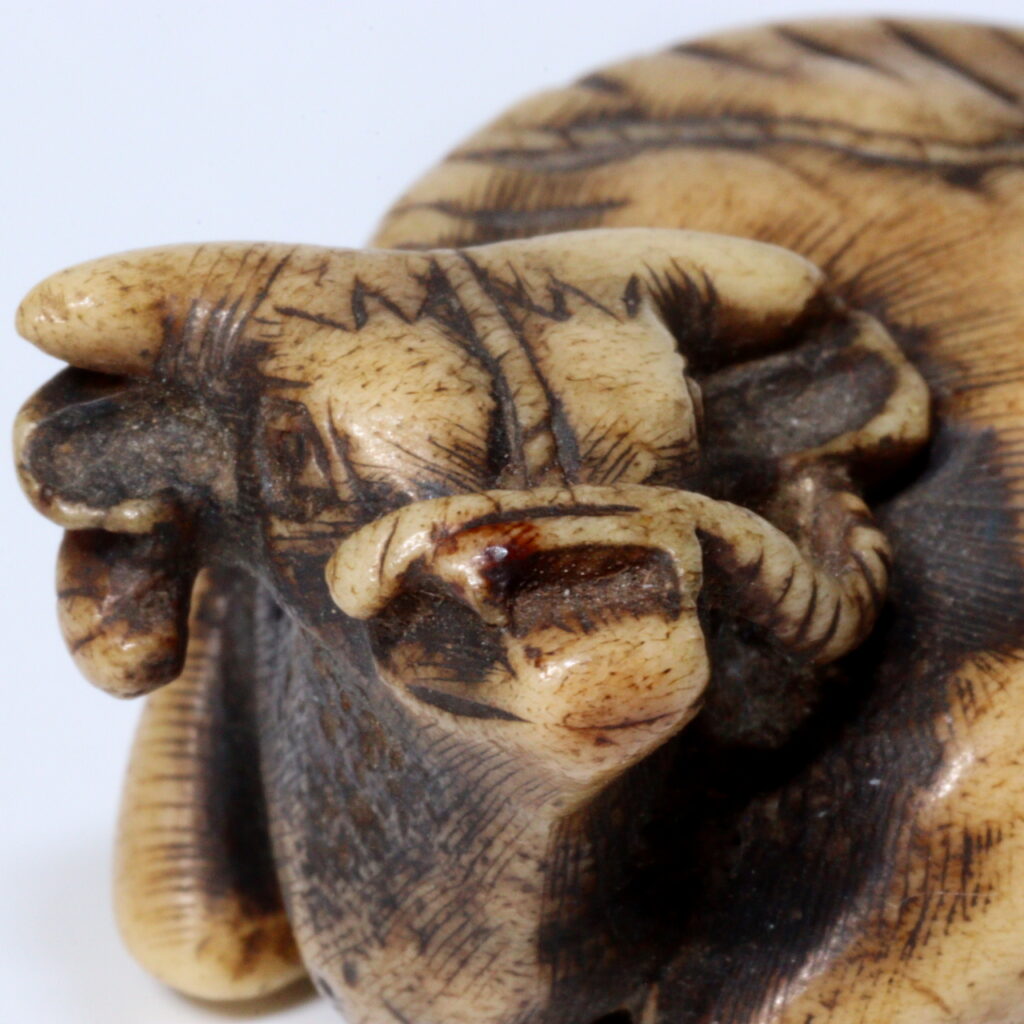
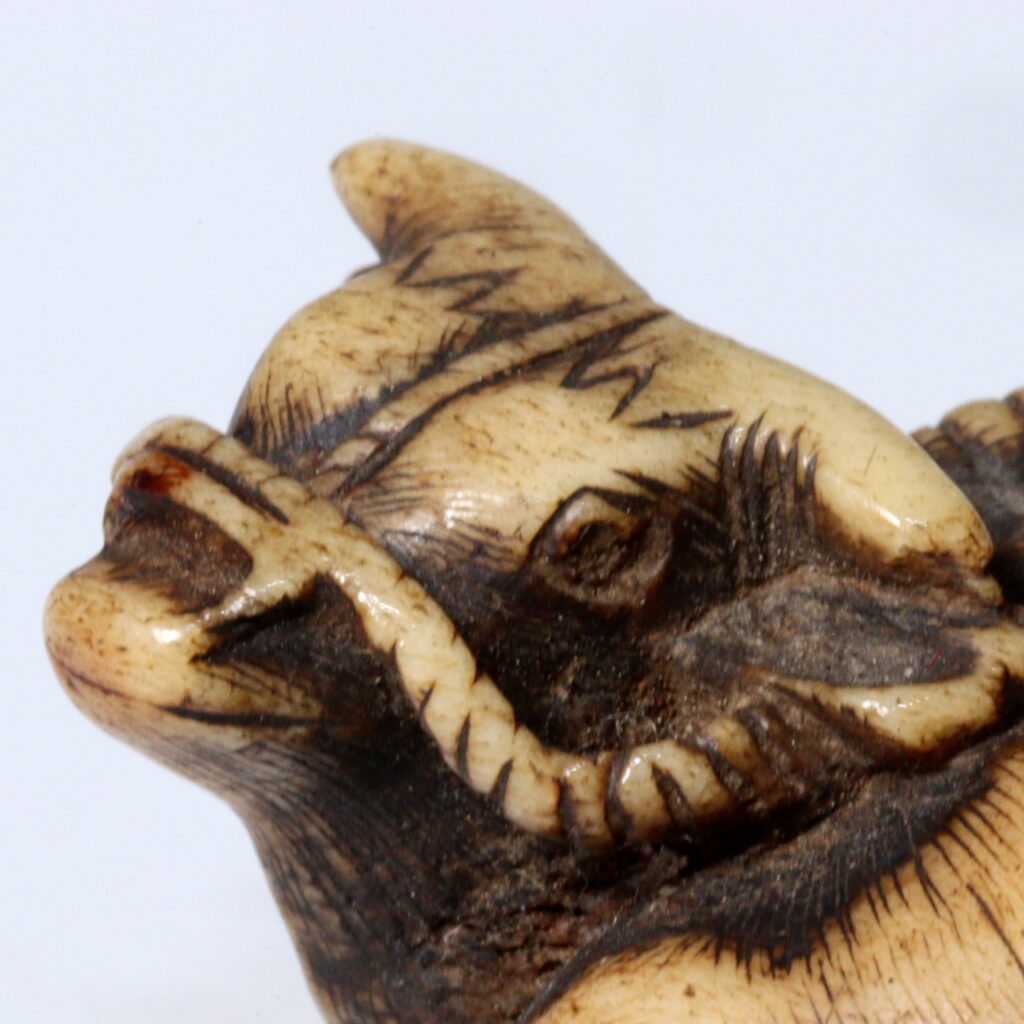
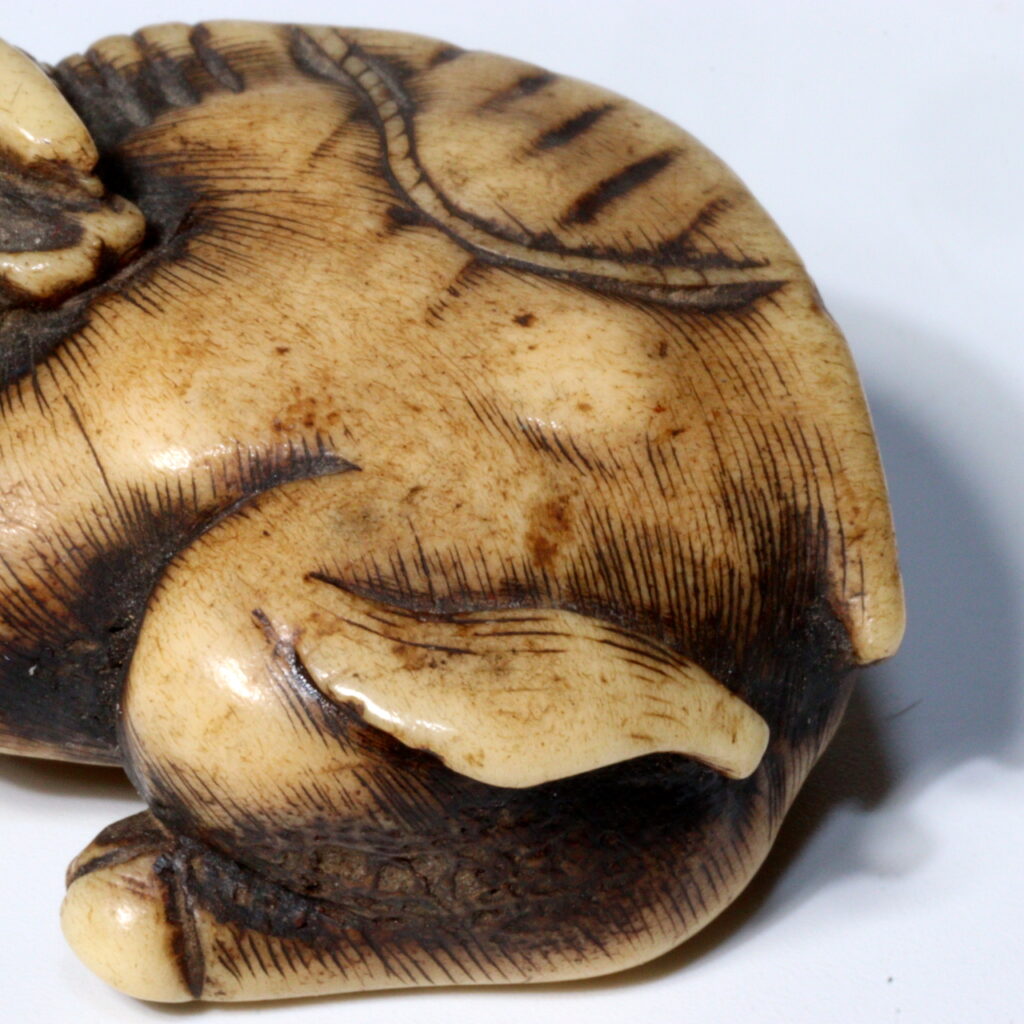
A Miniature Masterpiece Reflecting Strength and Serenity
Among Japanese antiques treasured by collectors around the world, the netsuke holds a special place as both functional accessory and miniature sculpture. This Edo-period Kazuno netsuke, depicting a resting ox (ushi), exemplifies the perfect harmony between craftsmanship, symbolism, and everyday art that defines Japan’s cultural heritage.
The Story Behind This Piece
During the Edo period (1603–1868), when traditional garments such as the kimono lacked pockets, small carved toggles called netsuke were used to secure personal items—medicine cases (inro), tobacco pouches, or purses—suspended from the sash (obi). Over time, these objects evolved from simple utilitarian forms into refined expressions of artistry and individual taste.
This particular netsuke, attributed to the Kazuno school, reflects a lineage of skilled carvers active during the late Edo era. The Kazuno masters were known for their ability to imbue animal subjects with warmth and subtle personality, transforming ivory and wood into lifelike forms.
The ox (ushi) itself is a powerful cultural motif in Japan, symbolizing perseverance, patience, and the quiet strength of the earth. In Buddhist tradition, it also represents spiritual discipline—the ox-taming parables depict enlightenment as the process of calming and guiding the mind. Within the Edo aesthetic, such a figure was not merely decorative but also moral: a reminder of steadfastness amid the complexities of daily life.
The Beauty and Craftsmanship
Carved from natural ivory (aged to a soft amber hue), this netsuke reveals extraordinary attention to detail. The artist’s hand has rendered every fold of skin, the gentle curve of the horns, and the calm expression of the ox with lifelike subtlety. The fine incised lines of the fur, darkened through years of handling, add texture and depth, showcasing the traditional Japanese technique of ink accentuation.
The ox’s posture—reclining with limbs tucked close—captures both rest and latent power, embodying the Japanese ideal of balance between strength and serenity. The surface’s gentle wear and natural patina tell of centuries of careful preservation and use, evoking the wabi-sabi appreciation for imperfection and time’s passage.
Unlike Chinese ivory carvings, often prized for their decorative abundance, Edo netsuke favor restraint and intimacy. Each piece was meant to be held, turned in the hand, and felt—a tactile conversation between maker and owner. This ox netsuke invites precisely that quiet engagement.
Its Value for Collectors Worldwide
For collectors and connoisseurs of Japanese art, this Kazuno netsuke offers both historical depth and aesthetic refinement:
- Cultural heritage: An authentic Edo-period example from a recognized carving tradition.
- Artistic mastery: A balanced blend of realism, symbolic meaning, and understated elegance.
- Material integrity: Natural ivory with rich patina and fine linework, untouched by restoration.
- Timeless appeal: The ox motif resonates with universal values of endurance and humility.
- Investment in tradition: Netsuke of this quality represent an enduring connection to the Japanese ethos of craftsmanship and mindfulness.
Beyond its collectible value, this netsuke embodies the Japanese philosophy that art should accompany life—not remain apart from it. Its small scale belies its profound presence.
Conclusion & Product Link
This Edo-period Kazuno ox netsuke stands as a symbol of Japan’s union between artistry and philosophy—where everyday objects were crafted with reverence, and even the smallest form expressed great meaning.
👉 View this item here:
https://koedo-sun-art.com/search?q=NW263&options%5Bprefix%5D=last
If this piece has already found its new home, please explore our other Japanese antique collections here:
🔗 https://koedo-sun-art.com